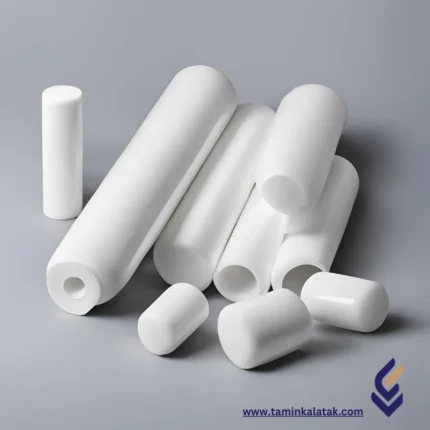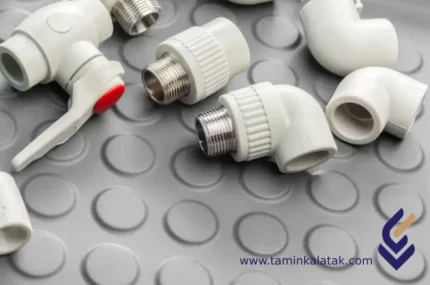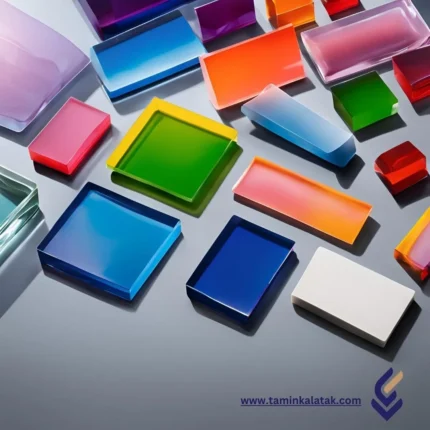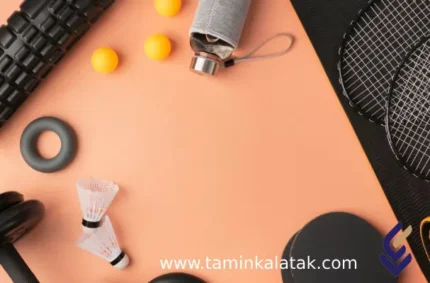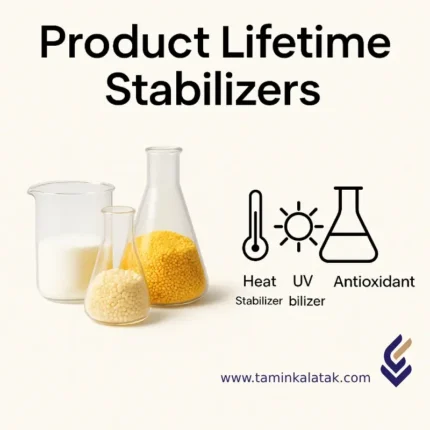Acrylic Rubber (ACM)
Acrylic rubber, or ACM, is a synthetic rubber renowned for its exceptional resistance to hot oils and oxidation. This unique property has made ACM one of the most popular types of rubber across various industries, particularly in the automotive sector. Its outstanding resistance to heat and oils has led to widespread use in the automotive, aerospace, and chemical industries.
ACM (Acrylic Rubber) is a versatile material with a wide range of applications, particularly in industries where high temperature and oil resistance are crucial. Here are some of its primary applications
- Engine components
- Transmission components
- Fuel system components
- Seals and gaskets
- Adhesive applications
Acrylonitrile Butadiene Styrene (ABS)
ABS is a terpolymer produced through the polymerization of styrene and acrylonitrile in the presence of polybutadiene.
The composition ratio typically varies between 15–35% acrylonitrile, 5–30% butadiene, and 40–60% styrene.
This material is generally manufactured through emulsion polymerization or by advanced blending techniques that combine polymers which normally do not mix, resulting in a homogeneous, high-performance product.
ABS 0150
ABS 0150 is one of the most popular and widely used grades of ABS.
Thanks to its excellent balance of strength, impact resistance, and processability, it is commonly used in a wide range of manufacturing industries.
This grade typically has a medium melt flow index (MFI), making it particularly suitable for injection molding applications.
ABS N50
ABS N50 grade offers superior mechanical performance and high impact strength, making it ideal for use in appliances, industrial parts, and electronic components.
Specially formulated for injection molding, N50 provides a smooth, glossy surface finish with excellent paintability, making it a top choice for aesthetic and functional applications across various industries.
Structure of Acrylonitrile Butadiene Styrene
Acrylonitrile Butadiene Styrene (ABS) is an engineering thermoplastic copolymer composed of three primary monomers:
-
Acrylonitrile – provides chemical and heat resistance
-
Butadiene – imparts toughness and impact strength
-
Styrene – offers rigidity, processability, and surface gloss
This three-component structure gives ABS a well-balanced combination of toughness, mechanical strength, and processability, making it a preferred material in automotive, appliance, electronic, and consumer product manufacturing.
Due to its versatility and performance, ABS is one of the most in-demand polymers in the global supply chain.
Thermal and Mechanical Properties of ABS
The specific blend of these polymers determines the unique properties of ABS for various applications:
-
Acrylonitrile enhances chemical and heat resistance.
-
Butadiene provides impact strength and toughness.
-
Styrene contributes to rigidity, surface gloss, and ease of processing.
ABS exhibits a tensile strength ranging from 30 to 60 MPa, ensuring excellent structural integrity and load-bearing capability.
It also demonstrates good resistance to a wide range of chemicals, including acids and solvents.
Applications of Acrylonitrile Butadiene Styrene (ABS)
1. Automotive Industry
ABS is widely used for both interior and exterior automotive parts.
Its impact resistance, durability, and ease of molding make it ideal for components such as dashboard panels, door trims, interior handles, and exterior body parts.
2. Consumer Goods
ABS is commonly used in the manufacture of household appliances (vacuum cleaners, kitchen devices, entertainment systems) and consumer electronics.
Its mechanical strength, impact resistance, and electrical insulation properties make it ideal for these applications.
3. Medical and Healthcare Equipment
ABS is increasingly used in medical and healthcare applications.
Its biocompatibility, ease of sterilization, and resistance to chemicals make it suitable for medical device housings, handles, and trays.
Its dimensional stability and durability allow it to withstand repeated sterilization cycles without performance degradation.
4. Industrial and Engineering Uses
ABS is also used in protective equipment, machine housings, tool handles, and industrial components.
Its high mechanical strength, dimensional stability, and impact resistance make it suitable for demanding industrial environments.
Advantages of ABS
✅ Cost-effective manufacturing
✅ Withstands multiple heating and cooling cycles
✅ Recyclable material
✅ High impact resistance
✅ Excellent chemical resistance
✅ High rigidity and mechanical strength
Disadvantages of ABS
⚠️ Flammable
⚠️ Poor weather and UV resistance
⚠️ Limited heat resistance
ABS Market in Türkiye
In recent years, the turkish polymer market has experienced strong growth in demand for ABS granules.
Due to its high impact strength, excellent mechanical properties, and easy processability, ABS has become one of the key raw materials in automotive, home appliance, and electronics industries.
For industrial customers, up-to-date ABS pricing is crucial since fluctuations in the petrochemical raw material market directly affect final production costs.
Many companies prefer to source their materials from reliable domestic producers such as Qa’ed Basir Petrochemical and Tabriz Petrochemical, both recognized for producing high-quality ABS that meets international standards.
Several factors influence ABS pricing, including grade type, producer brand, order volume, and market conditions.
Therefore, it’s important to have accurate and current price information before purchasing.
We recommend contacting our technical and sales experts for the latest ABS market updates and professional guidance.
ABS Production Process
ABS offers a balanced combination of strength, toughness, and heat resistance, which makes it a preferred polymer in automotive, appliance, electronics, and toy manufacturing.
Its production involves combining three different monomers to form a complex copolymer with unique mechanical and thermal properties.
Main Monomers – The Building Blocks of ABS
-
Acrylonitrile (C₃H₃N): Adds chemical resistance, heat stability, and hardness
-
Butadiene (C₄H₆): Provides toughness and high impact resistance
-
Styrene (C₈H₈): Offers rigidity, gloss, and processability
Primary Manufacturing Method – Emulsion Polymerization
The most efficient and widely used method for producing ABS is emulsion polymerization, which typically occurs in two main stages:
Stage 1: Production of Polybutadiene Latex
In the first stage, butadiene monomer is polymerized in water in the presence of an emulsifier (similar to soap), forming a latex of polybutadiene rubber.
This latex contains fine rubber particles that later act as impact-modifying domains in the final ABS structure.
Stage 2: Graft Polymerization
In the second stage, acrylonitrile and styrene monomers are added to the polybutadiene latex.
An initiator is then introduced to trigger polymerization.
This results in the formation of styrene-acrylonitrile (SAN) copolymer chains that graft onto the rubber particles, creating a dual-phase system — a soft rubbery phase (butadiene) dispersed within a rigid glassy matrix (SAN).
This complex morphology gives ABS its unique combination of toughness and strength.
Final Stage – From Latex to Granules
After polymerization, the ABS latex undergoes a finishing process to produce the final granulated resin:
-
Coagulation: The latex is coagulated using chemical agents, separating polymer particles from water.
-
Washing and Drying: The polymer is thoroughly washed and dried to remove residual moisture.
-
Extrusion and Pelletizing: The dried ABS powder is blended with additives (heat stabilizers, pigments, lubricants) and processed through an extruder.
The molten material is extruded into strands, cooled, and cut into uniform ABS granules, which are then ready for commercial use across industries.
Conclusion
Acrylonitrile Butadiene Styrene (ABS) is a high-performance engineering thermoplastic offering an ideal balance of strength, impact resistance, and processability.
Its versatile properties make it indispensable in automotive, appliance, electronics, and industrial applications.
The variety of ABS grades—including 0150 and N50—caters to specific manufacturing requirements, ensuring high-quality molded products with excellent aesthetic and mechanical performance.
For updated pricing, technical consultation, or bulk purchasing, please contact our industrial specialists for expert guidance on selecting the most suitable ABS grade for your application.
Acrylonitrile Styrene Acrylate (ASA)
Acrylonitrile Styrene Acrylate structureASA is typically formed by grafting acrylonitrile and styrene onto an acrylic ester elastomer backbone. The acrylic ester phase provides the material with flexibility and impact resistance, while the acrylonitrile and styrene phases contribute to rigidity, chemical resistance, and surface finish.
Acrylonitrile Styrene Acrylate propertiesAcrylonitrile-Styrene-Acrylate (ASA) polymer exhibits a combination of properties that make it well-suited for outdoor and demanding applications. Acrylonitrile Styrene Acrylate (ASA) polymer is a thermoplastic known for its excellent weather resistance, high impact strength, and UV stability, making it ideal for outdoor applications. It combines the toughness of acrylonitrile, the rigidity of styrene, and the weather-resistant properties of acrylic ester, resulting in a material that maintains its color, gloss, and mechanical integrity even under prolonged exposure to sunlight and harsh environmental conditions. ASA is resistant to chemicals, heat, and environmental stress cracking, and it exhibits good processability, enabling it to be molded into complex shapes. Its durability and aesthetic qualities make it suitable for use in automotive parts, outdoor furniture, and building materials.
ApplicationAutomotive Industry
- Exterior Components: Used for manufacturing exterior parts like side view mirrors, radiator grilles, and trims due to its resistance to UV radiation and harsh weather conditions.
- Interior Components: Employed in dashboards, panels, and other interior parts requiring durability and aesthetic appeal.
- Roofing and Cladding: ASA is used in roofing sheets, siding, and cladding materials for its resistance to fading and cracking when exposed to sunlight.
- Windows and Doors: Frames and profiles made of ASA are durable and maintain their color over time.
- Casing and Enclosures: ASA is used in the production of enclosures for electronic devices, electrical components, and appliances due to its impact resistance and aesthetic surface finish.
- Connectors and Insulators: The polymer is valued for its insulating properties and stability.
- Outdoor Furniture: Widely used for chairs, tables, and other outdoor furniture because it retains color and strength under prolonged exposure to sunlight and rain.
- Household Items: Utilized in kitchen appliances, vacuum cleaners, and other durable goods.
- Filament Material: ASA is a popular material for 3D printing, especially for outdoor applications, as it offers better UV resistance compared to ABS.
Advantages
- High impact strength
- Good Processability
- Weather Resistance
- Color and Gloss Retention
- Durability
Disadvantages
- Limited High-Temperature Resistance
- Flammability
- Lower Strength Compared to Metals
- Environmental Impact
Active Agents
- Automotive industries
- Tires
- Medical products
- Construction industries
- Electronics industries
- Internal pipes
Adhesives Rubber
- Packaging industries
- Medical equipment production
- Part Epoxy Adhesives
- Electronic products
- Construction industries
Ageing Stabilizers
Why do we need aging stabilizers?Increase the lifespan of materials: Without the use of stabilizers, materials degrade over time and lose their properties. Improve performance: Stabilizers can help improve the mechanical, thermal, and chemical properties of materials. Reduce costs: By increasing the lifespan of materials, maintenance costs are reduced.
Mechanism of action of aging stabilizersFree radical absorption: Many stabilizers interrupt the chain of oxidation reactions by absorbing free radicals. Energy absorption: Some stabilizers, such as UV absorbers, absorb radiant energy and dissipate it as heat. Complex formation: Some stabilizers form complexes with metal ions and prevent the catalysis of oxidation reactions. Applications of aging stabilizers Aging stabilizers are used in various industries, including plastics, rubber, paints, coatings, and food. Some of the important
applications of Aging StabilizersPlastics industry: Extending the shelf life of plastic products such as pipes, films, and automotive parts Rubber industry: Increasing the resistance of rubber to aging and cracking Paint and coating industry: Improving the durability and stability of paints and coatings Food industry: Extending the shelf life of packaged foods Pharmaceutical industry: Protecting drugs from degradation
Agricultural & Forestry Tires
Aircraft Tires
Alcoholic Solvents
- Types of ethyl alcohol
- Halal
- Raw material in chemical syntheses
- Fuel
Aliphatic Solvents
Alpha-Methylstyrene
Properties of Alpha-MethylstyreneHigh thermal stability: Alpha-Methylstyrene has high thermal stability, which makes it suitable for use in applications that require heat resistance. Good electrical properties: This material has good insulating properties and is used in the production of electrical insulating materials. Polymerization ability: Alpha-Methylstyrene is easily polymerized and is used in the production of various polymers. Mild odor: Alpha-Methylstyrene has a mild odor.
Alpha-Methyl Styrene ApplicationsPolymer Industry: Production of thermoplastic resins for adhesives and coatings Production of engineering polymers with high mechanical properties Production of photopolymer resins for dentistry Rubber Industry: As a modifier in rubber production Paint and Coating Industry: As an additive in paints and coatings to improve their properties Electronics Industry: In the production of electrical insulating materials Method of Alpha-Methyl Styrene Production Alpha-Methyl Styrene is usually produced as a by-product of the cumene production process. In this process, cumene reacts with oxygen to form cumene hydroperoxide. Cumene hydroperoxide is then decomposed into phenol and alpha-methyl styrene. Safety and Hazards Alpha-Methyl Styrene is a chemical and safety precautions must be observed when working with it. This substance may cause irritation to the skin, eyes, and respiratory tract. Therefore, gloves, safety glasses, and a mask should be worn when working with alpha-methyl styrene.
Aluminum Nitrate
Physical and chemical properties of aluminum nitrateAppearance: It is usually seen as a white powder or colorless crystals. Solubility: It dissolves well in water and forms acidic solutions. Strong oxidizer: Aluminum nitrate is a strong oxidizer and can react with combustible materials and cause fires. Hygroscopic: It easily absorbs moisture from the air and for this reason is usually stored in hydrated form.
Applications of aluminum nitrateTanning industry: It is used in the tanning process to convert raw hides into leather. Alumina production: Used as a raw material for the production of alumina (aluminum oxide), which is used in various industries including ceramics and paper production. Petroleum industry: Used as a catalyst and drying agent in the oil refining process. Paint and coating industry: Used in the production of paints and protective coatings. Pharmaceutical industry: Used as an auxiliary material in the production of some drugs. Agricultural industry: Used as a fertilizer and soil conditioner. Other uses: Used in the production of incendiary materials, explosives, and as a nitrating agent.


